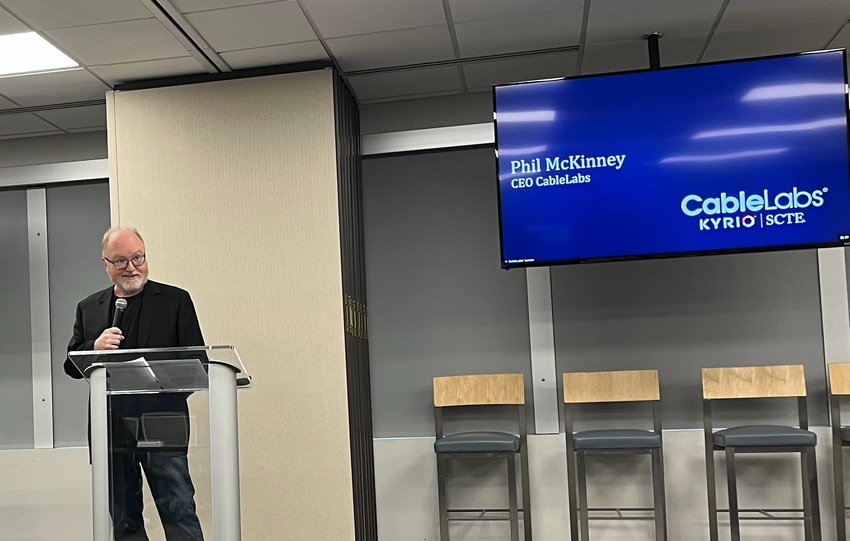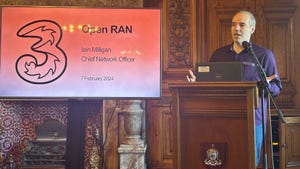Feds get rolling on the RIC in open RAN
Federal officials are planning to host a forum on the RAN Intelligent Controllers (RIC) portion of the open RAN market. That's part of a broader push among US officials to support the technology.

LOUISVILLE, Colorado – US government officials are now training their sights on the market for RICs in their efforts to grow an ecosystem around open RAN technology.
Specifically, Thomas Rondeau said that the Department of Defense (DoD) and other US government agencies plan to host a two-day forum on RAN Intelligent Controllers (RICs) in Dallas in March of next year.
"The RIC is under-formed right now," Rondeau said. Rondeau is the DoD's principal director for "FutureG and 5G" in the Office of the Under Secretary for Defense for Research and Engineering. He guides the DoD on researching and deploying 5G for the US military.
He said the RIC Forum is intended to "help us kick start that conversation" around maturing the RIC portion of the open RAN ecosystem.
"That is an incredible opportunity for a market space to develop," Rondeau said of the RIC. "This will be the smarts controlling these open RAN systems."
Rondeau commented here at a CableLabs event celebrating the end of the US government's two-year 5G Challenge. The 2023 portion of the Challenge, which is hosted by the DoD and the White House's National Telecommunications and Information Administration (NTIA), allocated a total of $7 million in prizes for products that "accelerate the adoption and development of an open, interoperable, secure, multi-vendor 5G ecosystem."
NTIA officials named Mavenir, Radisys, NewEdge and Lions among the winners of this year's $7 million in prizes. Capgemini, Radisys, Mavenir, Fujitsu and Rakuten Mobile were among the winners of $3 million in prizes in the program's first year.
Rolling into the RIC
Open RAN proponents in general are working to develop interoperable interfaces among various wireless networking components with the goal of allowing network operators to mix and match equipment from different vendors in their networks. The market has been developing in fits and starts over the past few years as wireless network operators ranging from Dish Network to Vodafone work to deploy open RAN equipment.
RICs sit inside open RAN networks and are intended to provide an open hosting platform for software that can control the radio access network (RAN). RICs have two basic flavors: near-real-time (for controlling individual cell sites) and non-real-time (for controlling overall network operations like energy usage).
As noted by Mavenir's John Baker on LinkedIn, there are a wide variety of RIC vendors, including Mavenir, VMware, Samsung, Nokia, Juniper and NEC.
Rondeau, of the DoD, explained that the RIC is critical to the open RAN market. He said RICs run software applications – rApps and xApps – that are intended to control everything from cell site power usage to AI-directed computing.
A national security issue
US government officials first began taking an interest in open RAN during the Trump administration, but that focus has expanded under President Biden. Indeed, the 5G Challenge from the DoD and the NTIA is one of many efforts by US government officials to foster the development of open RAN in general.
Perhaps the US government's biggest open RAN push involves the $1.5 billion Wireless Innovation Fund, which is intended to "support the development of open and interoperable networks." The NTIA, the administrator of that fund, recently issued its first grants in the program, doling out a total of $5.5 million to Northeastern University, New York University and DeepSig.
But there are plenty of other federal programs targeting open RAN. For example, the US National Science Foundation (NSF) recently issued $25 million in investments to develop secure 5G connections, including those in open RAN networks.
Moreover, the federal government is also working to test and purchase open RAN equipment. Indeed, DoD contractors including Lockheed Martin and Raytheon have been demonstrating 5G equipment intended for soldiers. And the Pentagon recently announced that DoD Chief Information Officer John Sherman will take over the agency's 5G-related activities, starting next month.
According to officials in the space, the federal push around open RAN is in part intended to help foster an ecosystem of domestic hardware and software suppliers. After all, international heavyweights like Nokia, Ericsson and Samsung currently dominate the sale of 4G and 5G equipment.
The federal push around open RAN is also an attempt to improve the security capabilities around 5G. Some federal officials argue that it's easier and quicker to plug security holes in open source systems when compared with proprietary systems.
And, more broadly, American interest in open RAN is also an effort to counter the rise of Chinese equipment suppliers like ZTE and Huawei. According to US officials, such companies have been labeled national security risks because Chinese spies can use the vendors' equipment to hack into US networks.
About the Author(s)
You May Also Like












